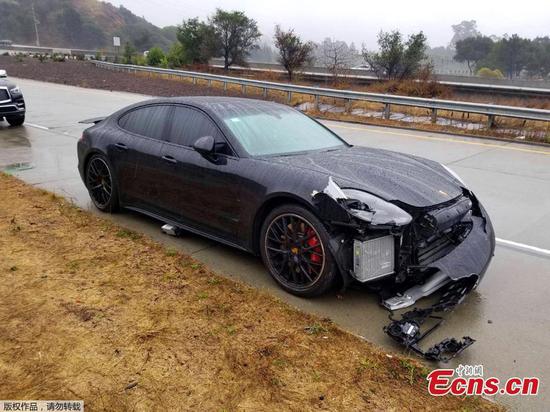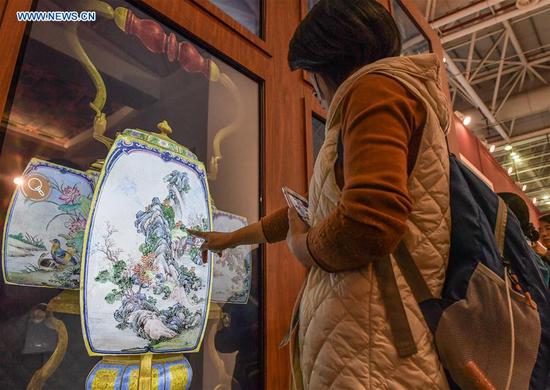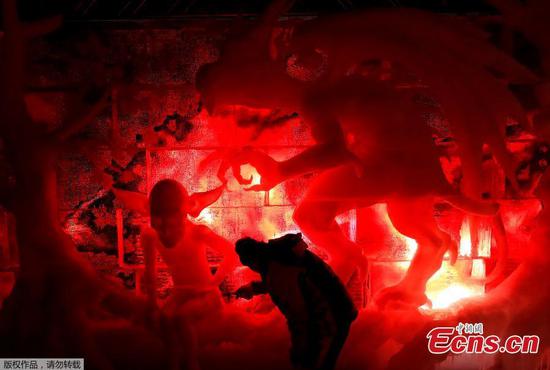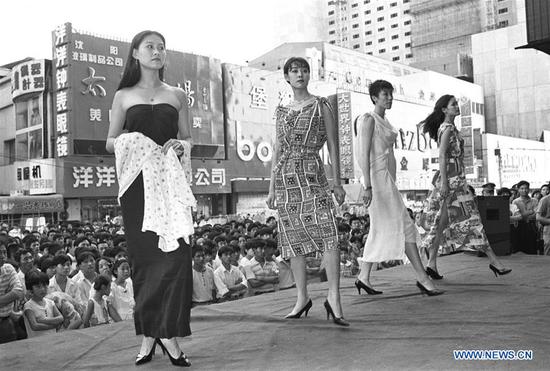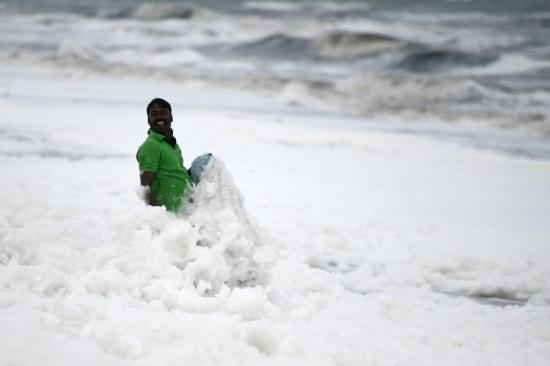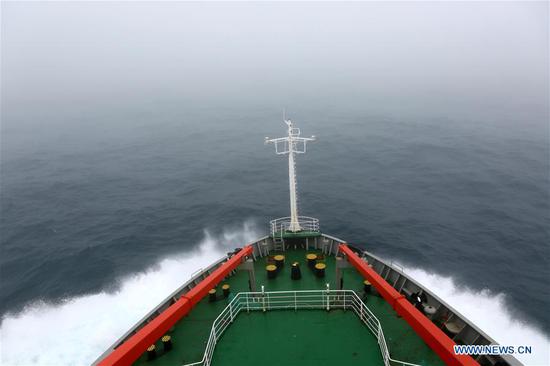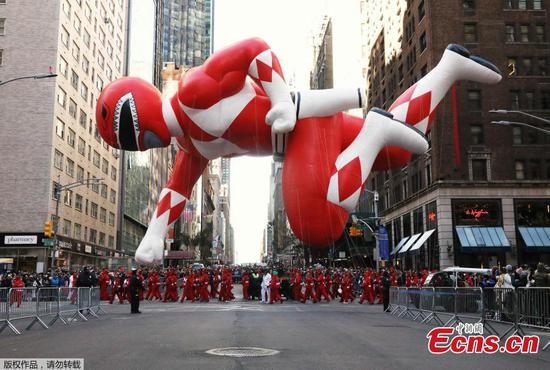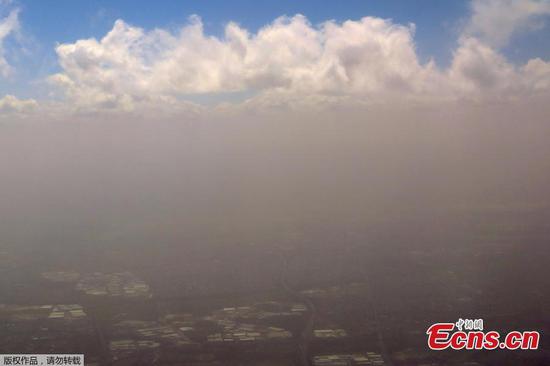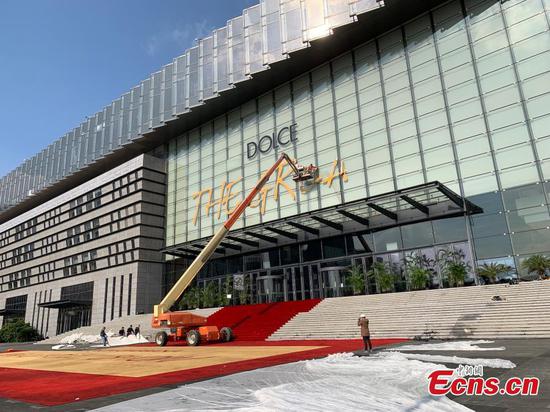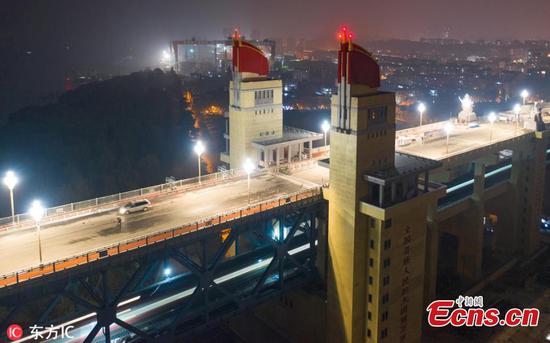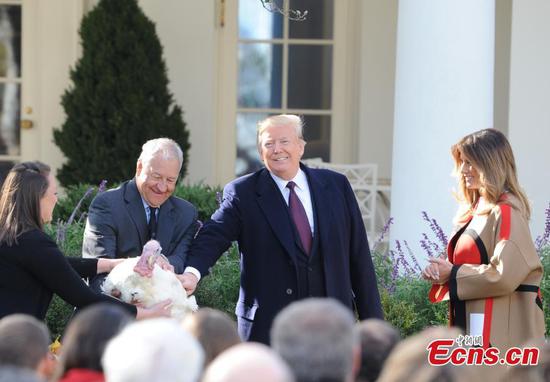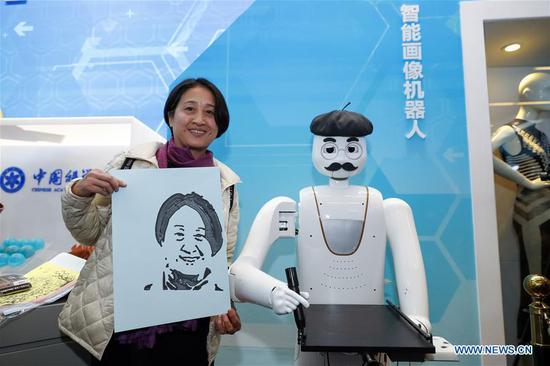As more Americans tend to browse online to get good deals on Black Friday instead of lining up at the crack of dawn in front of brick-and-mortar stores, the shopping spree seemed less wild this year.
Black Friday, the day after Thanksgiving that marks the official start of the U.S. holiday shopping season, pulled in 6.22 billion U.S. dollars in online sales this year, up 23.6 percent from a year ago and setting a new high, according to Adobe Analytics, which tracks transactions for 80 of the top 100 internet retailers in the United States, including Walmart and Amazon.
However, it does not mean traditional retailers have lost their appeal. Buy online and pick up in stores grew to be a popular option for shoppers this holiday season, with "click-and-collect" orders increasing 73 percent from Thursday to Friday, according to Adobe.
While online sales made inroads, retail malls were still packed though definitely not mobbed. More than 164 million Americans are expected to shop over the five days from Thanksgiving through Cyber Monday, projected the National Retail Federation.
South Coast Plaza, the largest shopping mall on the West Coast of the United States, predicted that nearly 200,000 people would have visited the center, who set a record of the county in sales of over 1.5 billion U.S. dollars last year and is seeing a new record in 2018.
The largest shopping center in California, anchored by three Macy's stores, Sears, Nordstrom, Bloomingdale's, and Saks Fifth Avenue, is located in city of Costa Mesa, 77 km east of Los Angeles downtown.
"Today was the busiest day after Thanksgiving in South Coast Plaza's history," Debra Gunn Downing, spokeswoman for South Coast Plaza, told Xinhua on Friday. "Some shoppers came for the Black Friday promotions while others came to enjoy the holiday atmosphere. There were lines outside the doors of some boutiques, including Chanel."
"All told, nearly 200,000 people will have visited the center today. We anticipate that to continue through the weekend and the momentum to carry through the holiday season," she added.
Black Friday, which was once relegated to the day right after Thanksgiving, now gets longer as stores offer pre-Black Friday and pre-pre-Black Friday sales.
South Coast Plaza opened its holiday season last week, lighting three 90-foot-high Christmas trees and setting a Santa's Village indoor where shoppers take photos with Santa Claus in live holiday music. Amazon also offers a "Black Friday Deals Week," with different markdowns each day.
WORRYING FOR POTENTIAL PRICE HIKE
Total spend for Black Friday weekend is predicted to reach roughly 59.6 billion U.S. dollars, according to estimates by GlobalData Retail. That represents an increase of 5.7 percent over the 2017 sales.
"More people have already shopped than at this point last year, and their average spend is higher," said Neil Saunders, the firm's managing director, said in a statement.
One factor driving this year's shopping spree might be concerns over potential price hike against the backdrop of U.S. tariffs battles with its major trading partners.
"More worryingly, this holiday season is likely only to be the start of higher prices for shoppers," wrote Erin Dunne in an opinion carried by www.washingtonexaminer.com.
In a rustling shopping mall in Queens, New York, 30-year-old Soraya and her husband were busy checking off items from their shopping list: clothes, sneakers, video games and a laptop.
Soraya told Xinhua she might even consider buying more goods this year to avoid higher prices.
According to a recent survey by Harris Insights & Analytics, a market research firm, 44 percent of U.S. consumers said they would compare prices of products more closely during the shopping season.
"It can affect your bottom line for sure," Lisa Jones, who was shopping Wednesday at a Home Depot store in San Mateo city, northern California, told Xinhua.
She was worried that price increases would cost her more in the coming years.
"I haven't seen the prices go up yet, but I think it will happen," she said.
Ruben, a shopper in Houston, told Xinhua he would shift some high-end electronics from his Christmas list.
"I normally wait until mid-December, but I am afraid that products in December will include the new imposed tariffs," he said.
Peifan Yu, a Houston resident, said he would not be waiting to see lower price after Christmas as usual.
Puneet Manchanda, professor of marketing at University of Michigan, told Xinhua on Wednesday that most U.S. retailers had not increased prices, but people would see that happen early in the new year.
"There is strong evidence that companies are changing their behavior vis-a-vis tariff implementation - they are stocking up heavily on the affected commodities and rationalizing their purchasing for next year," he said.
Alex Boehnke, spokesman for the Ohio Council of Retail Merchants, said in a report that the household impact would really be seen in January or February, when retailers have to restock shelves after the holiday shopping season.
Sunny Zhang, associate professor of Marketing at the Cameron School of Business, University of St. Thomas in Houston, noted that "for made-to-order items, for example, custom-made furniture, retailers are playing the effects of tariffs as they put the pressure on consumers on immediate purchases."










